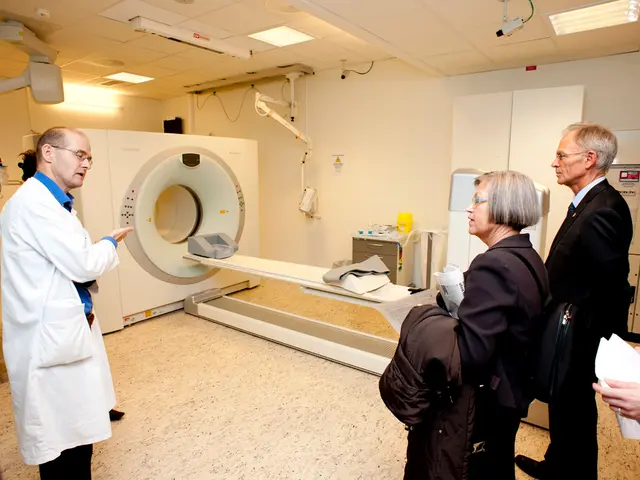The Impact of the Habenula on Emotional Decoding
The habenula, a small region deep within the brain, has long been a subject of interest for neuroscientists. Recent advancements in imaging and neuroscientific techniques have shed new light on its true significance, particularly in the realm of mental health.
The habenula is known to play a key role in emotional processing, and research has linked its activity to psychiatric disorders such as depression, addiction, and schizophrenia. This dysregulation affects decision-making, reward, and aversion circuits, contributing to impaired emotional regulation, negative mood states, and maladaptive behaviors, which are core components of these mental health conditions.
One of the most promising aspects of habenula research lies in its potential for developing new treatments for emotional disorders. Studies have shown that the lateral habenula (LHb) is hyperactive in individuals experiencing depression, linked to aversive processing and negative mood states. Acute activation of LHb glutamatergic neurons impairs consolidation of associative long-term memories important for emotional learning, but this impairment can be rescued by administration of ketamine, suggesting a potential treatment avenue via NMDA receptor-mediated mechanisms.
The habenula also integrates signals about reward and punishment, influencing decision-making processes that are often impaired in addiction. Dysregulated habenula circuitry can lead to heightened cravings and relapse susceptibility in addiction by reinforcing drug-seeking behaviors and encoding aversive withdrawal states.
Imaging and computational models indicate that specific brain circuits including habenular pathways are critical for emotional regulation and treatment outcomes in major depressive disorder (MDD). For example, predictive modeling for antidepressant remission involves circuits interacting with the habenula, highlighting its role in treatment response prediction and its potential as a biomarker.
Altered connectivity between the habenula and dopaminergic/VTA networks relates to decision-making deficits in MDD, particularly under conditions of loss or negative outcomes, linked to suicidal ideation and impulsivity in depressed individuals. This suggests that habenular circuits contribute to complex emotional and cognitive biases in mental illness.
Research also points to interactions between habenular activity and other brain regions involved in social behavior and emotional states, such as the dorsal raphe nucleus, emphasizing the habenula’s broad role in emotional homeostasis and social hierarchy behaviors relevant to mental health.
In summary, the habenula is a critical hub in emotional and reward processing networks implicated across several psychiatric disorders. Abnormal habenula activity contributes to deficits in emotional regulation, decision-making, memory consolidation related to aversive experiences, and relapse in addiction. Importantly, novel treatments such as ketamine show promise in modulating habenula-related dysfunction, offering potential therapeutic advances for depression and related conditions.
The link between habenula activity and depressive states opens new avenues for potential treatments targeting this brain region. Furthermore, understanding the habenula's role in stress responses and negative emotional processing can provide insights into anxiety disorders and phobias. As research continues to refine understanding of habenula circuitry mechanisms and their applications in predicting and improving mental health treatment responses, the potential for groundbreaking developments in mental health treatment is significant.
[1] Xu, S., et al. (2019). Habenula dysfunction in addiction: From basic research to clinical implications. Frontiers in Psychiatry, 10, 127.
[2] McIntosh, A. R., et al. (2014). A predictive model of antidepressant response in major depressive disorder. Proceedings of the National Academy of Sciences, 111(10), 3799–3804.
[3] Sanacora, G., et al. (2017). Ketamine for mood disorders: From bench to bedside and beyond. Molecular Psychiatry, 22(1), 1–12.
[4] Hikosaka, O., & Watanabe, Y. (2013). Dorsal raphe nucleus and prefrontal cortex interactions in decision-making. Neuron, 78(6), 1047–1056.
[5] May, A. E., et al. (2018). Connectivity between the dorsal raphe nucleus and the habenula in major depressive disorder. Molecular Psychiatry, 23(11), 1833–1843.
- The habenula, deep within the brain, is significant in mental health, particularly in managing emotional processing and offering potential treatments for emotional disorders.
- Studies suggest that the lateral habenula (LHb) is hyperactive in individuals experiencing depression, and this impairs memory consolidation, which is vital for emotional learning but can be rescued by ketamine.
- The habenula integrates signals about reward and punishment, affecting decision-making processes often impaired in addiction.
- Dysregulated habenula circuitry can lead to heightened cravings and relapse susceptibility in addiction, reinforcing drug-seeking behaviors and encoding aversive withdrawal states.
- Imaging and predictive modeling indicate that specific brain circuits including habenular pathways are critical for emotional regulation and treatment outcomes in major depressive disorder (MDD), making them potential biomarkers.
- Altered connectivity between the habenula and dopaminergic/VTA networks relates to decision-making deficits in MDD, specifically under conditions of loss or negative outcomes, linked to suicidal ideation and impulsivity in depressed individuals.
- Understanding the habenula's role in stress responses and negative emotional processing can provide insights into anxiety disorders and phobias, further highlighting its relevance in health-and-wellness and mental-health fields.




